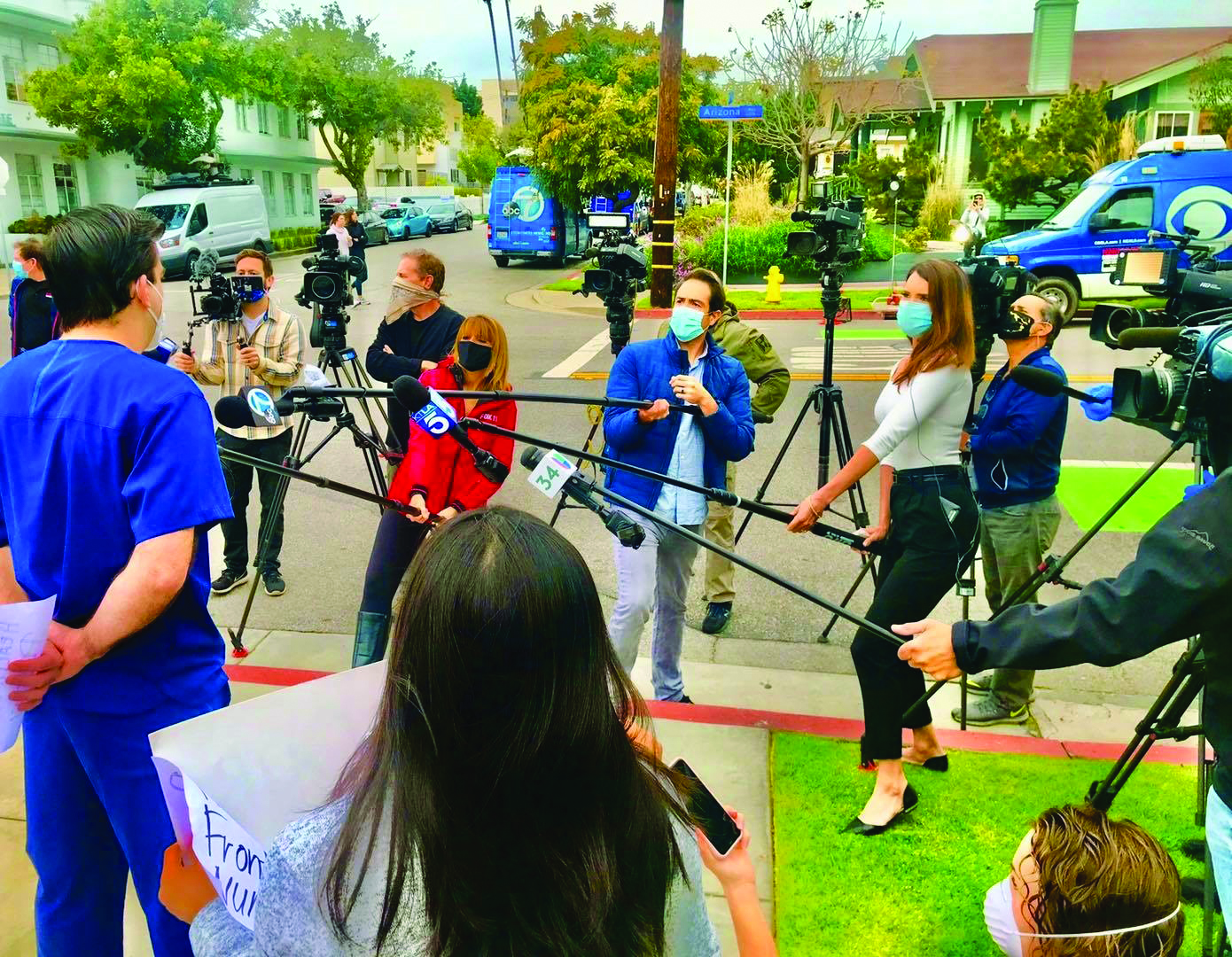KTLA: Setting an Example While Delivering the News

The anchors at KTLA, Nexstar’s station in Los Angeles, are still doing newscasts from the studio. But they’re eight feet apart at the anchor desk.
“It’s a little dramatic,” conceded KTLA news director Jason Ball. There are partitions under the desk that prevent the anchors from sitting closer together. “But I’m OK with it, because it makes a statement that we’re following the rules and we’re setting an example for our viewers.”
Since the coronavirus hit, anyone who doesn’t have to be in the newsroom is working remotely. When news crews go out to cover stories, the station sends them with supplies including wipes, gloves, masks and spray bottles of bleach to keep things clean.
News vans also have 10-foot boom mics and caution tape, so crews can set up a perimeter and keep people at a distance. “We love our viewers and they love us,” Ball said. “When they see our van or our people, they want to come to us and hug and do high fives. In the new world, we just have to be more cautious.
“We've always had a good connection with our viewer and I think this has really only strengthened it,” he said.
Many of those people have stories to tell. And some of them are upbeat and inspiring, like the woman who moved her piano outside and performs nightly concerts for the neighbors.
“The people want to know the latest information, but they don’t want it to be all just doom and gloom,” Ball said. That’s why the station continues to run sports, traffic and entertainment segments.
The smarter way to stay on top of broadcasting and cable industry. Sign up below
Keeping those newsrooms healthy and functioning is very important to Nexstar.
“Our solid focus is local content and making sure we’re staying connected with our viewers,” Nexstar Broadcasting president Tim Busch said.
The company is providing supplies and instructions on working during a pandemic.“The more people can work from home from the non-production side, the better off we are, because it allows the production side to have greater comfort and more safety,” Busch said.
The company has about 5,500 journalists across 110 newsrooms and bureaus in more than 20 state capitals and in Washington, D.C. Ball said Nexstar helps by providing best practices and has a group of former news directors called directors of local content development, who share story ideas and angles to cover during the crisis.
“No one can think of everything, so it’s great to have that collaboration,” he said.
But each Nexstar station can do its own thing. “We needed to learn what works for us,” Ball said. “We work pretty closely with our station in San Francisco and their plan is different from ours because their operation is different from ours. So it’s good that [corporate] has oversight to ensure that we’re taking certain precautions, but they let us figure out the plan that works for us.”
Jon has been business editor of Broadcasting+Cable since 2010. He focuses on revenue-generating activities, including advertising and distribution, as well as executive intrigue and merger and acquisition activity. Just about any story is fair game, if a dollar sign can make its way into the article. Before B+C, Jon covered the industry for TVWeek, Cable World, Electronic Media, Advertising Age and The New York Post. A native New Yorker, Jon is hiding in plain sight in the suburbs of Chicago.

